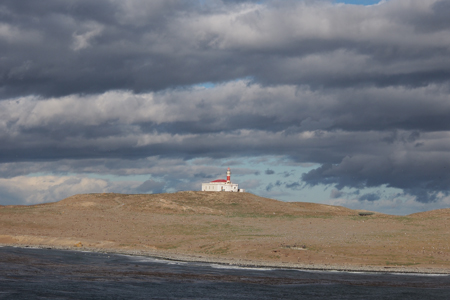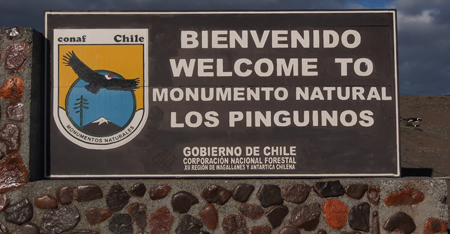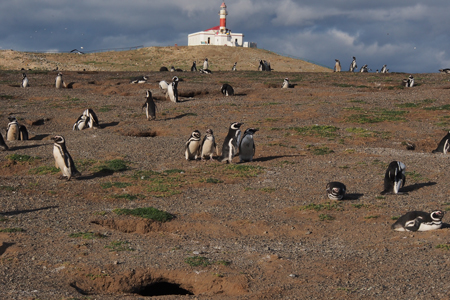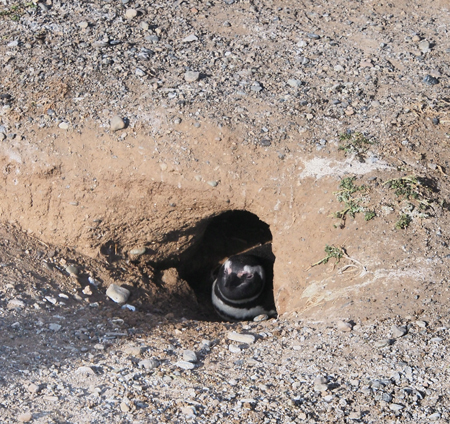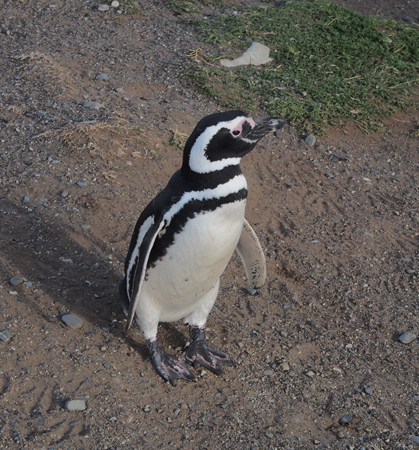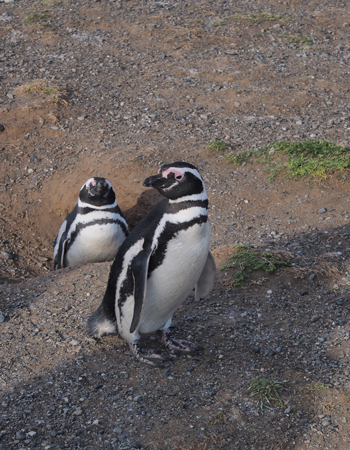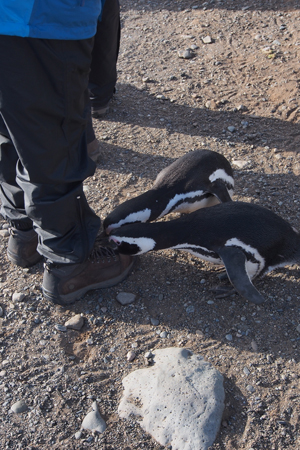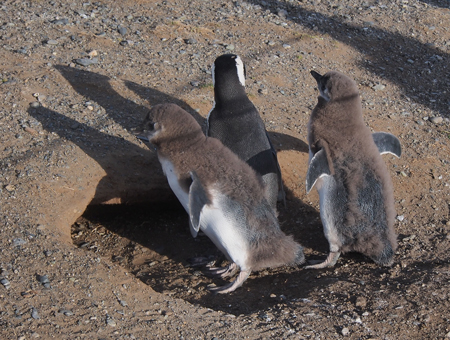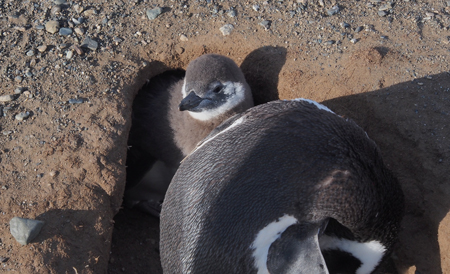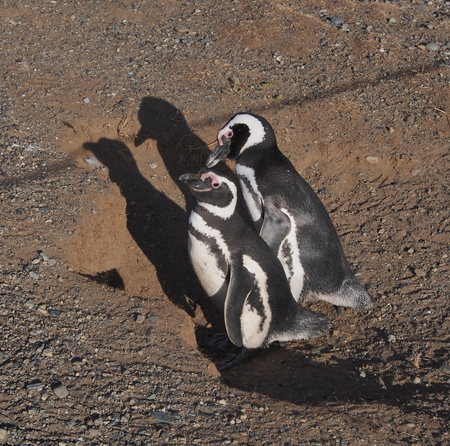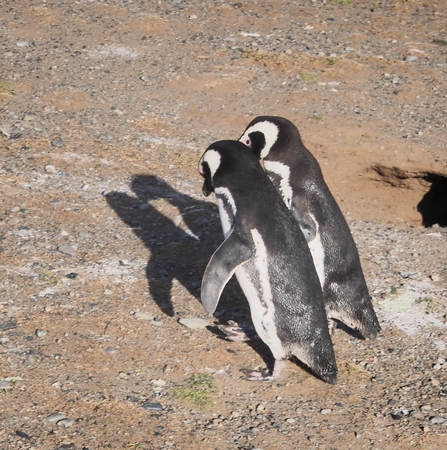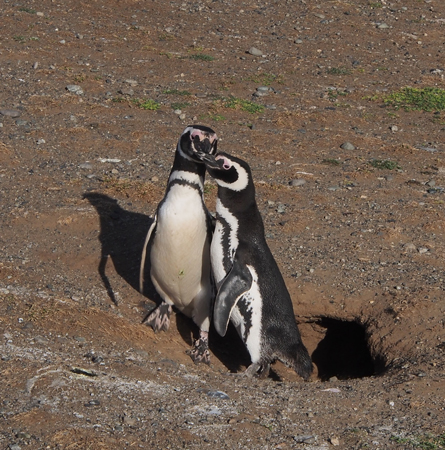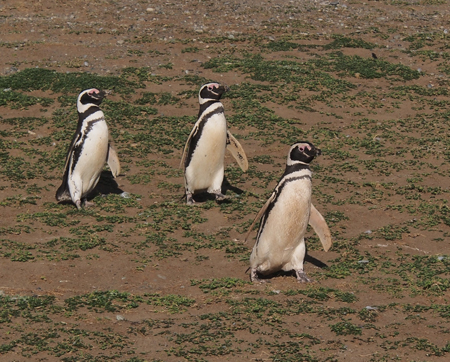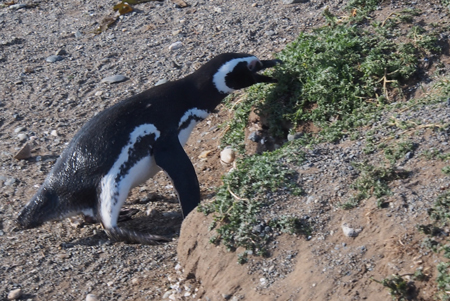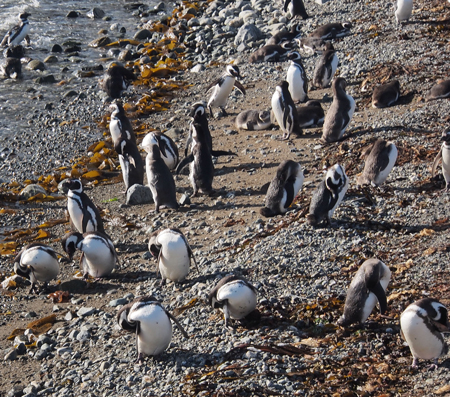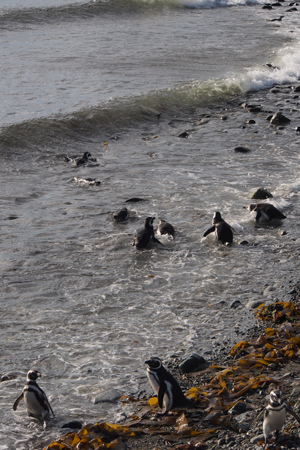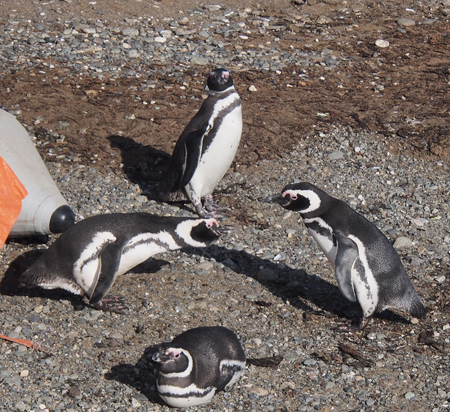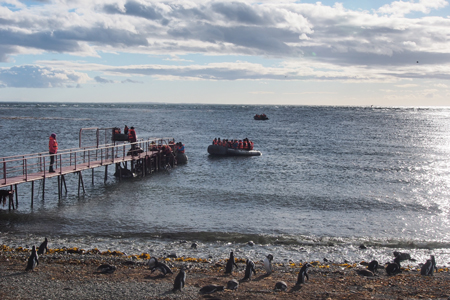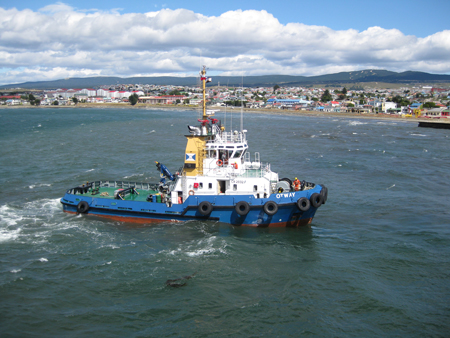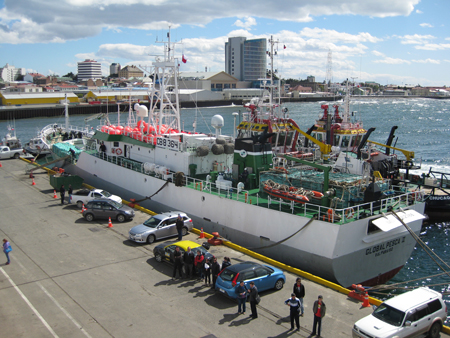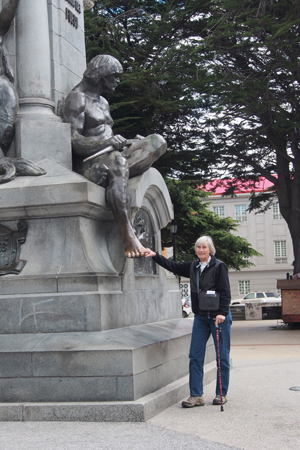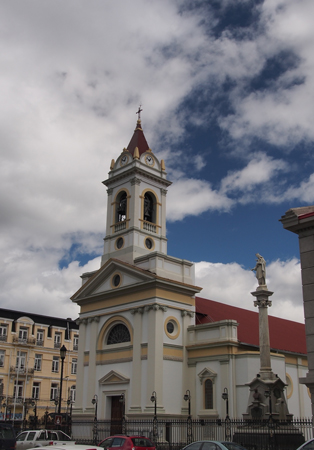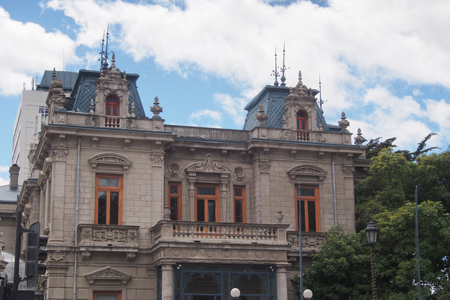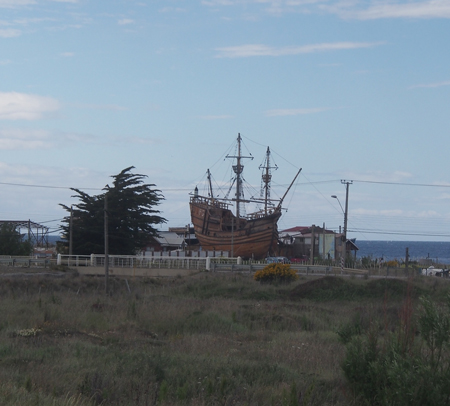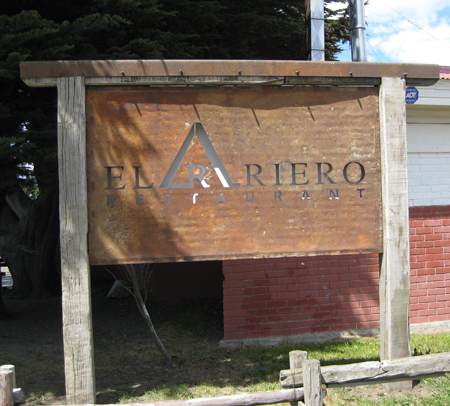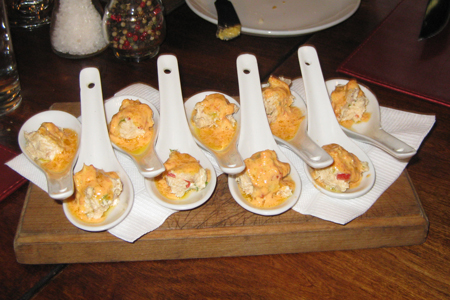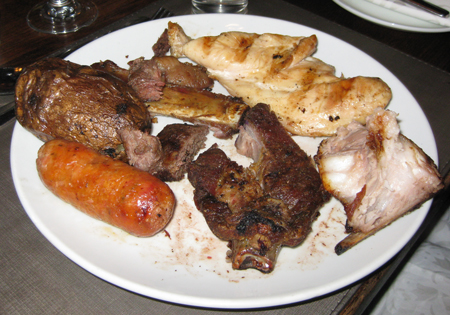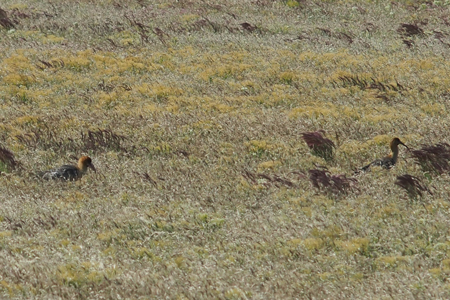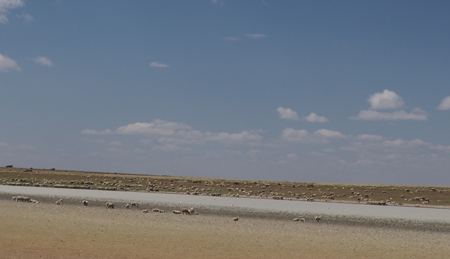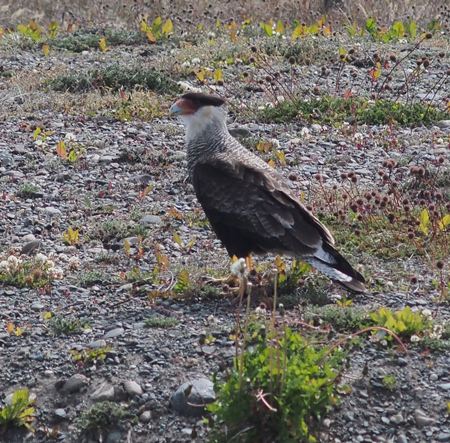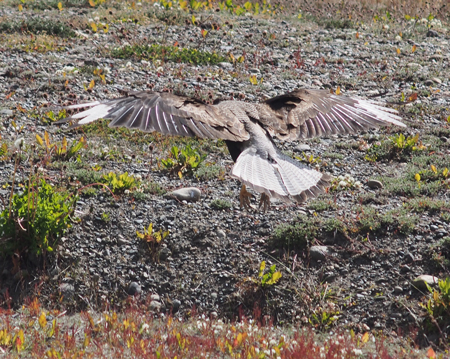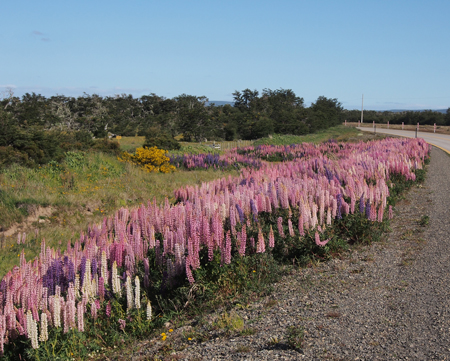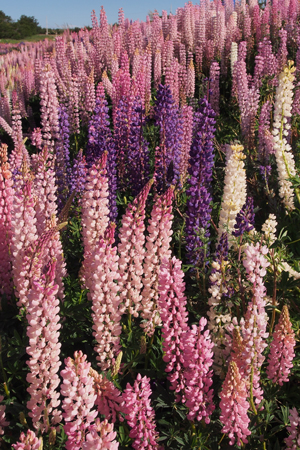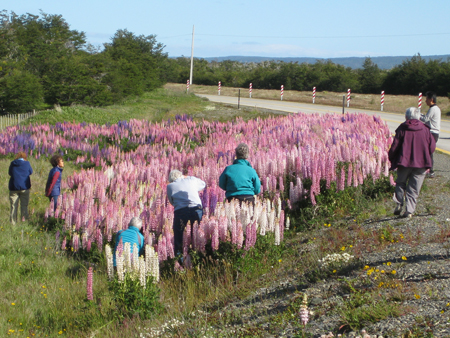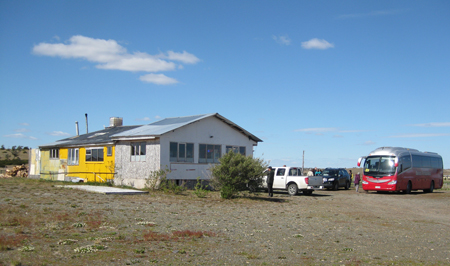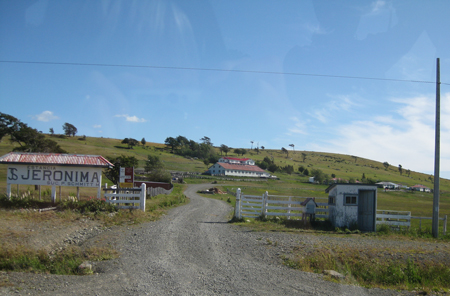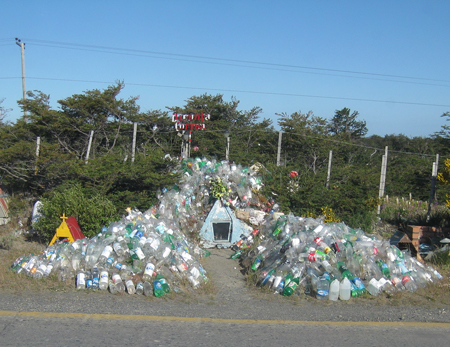Fri., 1/2/15 – Via Australis to Punta Arenas to Puerto Natales
We were up early for our last zodiac ride to see the Magellanic penguins before breakfast. We did not rush to join the pushing to be first to the island. Our patience almost cost us. The sea began to get rough and Marge and I were the last two on the last zodiac they allowed to go to the island. When we got to shore we were told to “take some pictures and return to the dock” as the sea was getting even rougher. Getting from the ship and down into the zodiac was treacherous. Now they could not get people back onto the ship. We watched for 40 minutes as four rafts full of people bobbed in the sea as the ship tried several positions to have the zodiacs return safely. We learned later that the captain and his girl friend had gone to the island and were in one of the zodiacs bobbing on the water. The captain evidently jumped from the zodiac to the ladder of the ship but no one else could do it. The captain eventually moved the ship inside the breakers to smoother water and the zodiacs could unload the passengers. We were in the last boat back but got safely on board. These are the conditions that we had been warned about and they could occur quickly and at any of our trips ashore.
On the island the sun was shining and the wind was cold but it did not spoil our penguin watching. We could not go up the path to the lighthouse or observation deck. There were plenty of penguins doing what they do – walking, swimming, bathing, and protecting their chicks. The chicks in or near their burrows were almost full size but still grey with fuzzy fluff. Some were starting to molt and grow adult feathers. These adults have distinctive markings on their heads and necks.
There are an estimated 250,000 penguins that nest on the island. The Magellanic penguin is one of the 17 or 19 species of penguins in the world. They live about 20 years and are 25 to 55 cm tall, beak to tail. They nest in burrows built by the male. The chicks are 6 to 7 months old before they can swim and get their own food. The Chilean Skua is one of their major predators.
Lighthouse on Magdalena Island
Magdalena Island
Magellanic Penguins
Peaking out of a burrow
Forward, march!
He has a rock in his beak for his mate
What nice shoelaces you have!
"Babies"
Baby being protected by mother
Courting 1
Courting 2
Courting 3
Courting 4
Yummy green stuff!
On the beach
In the water
A disagreement
Zodiacs waiting to return to the ship
Finally in calm enough water to unload the Zodiacs
The wind was so strong it took two tug boats to push our little ship into the pier in Punta Arenas. Berenice was surprised they even let us dock with the winds and rough sea.
We finally disembarked and had to pass through Chilean customs again. They are very strict about bringing any live plants, fruits and vegetables, meat or dairy products into their country. My peanut butter and remaining granola bars were okay but had to be declared.
We rode a bus 100 yards from the gangplank to the customs shed. They did not even ask for our passports – only our food. We then met our Chilean bus driver, Carlos, and our female local guide, Chris.
We stopped to look around the central plaza of Punta Arenas. There is a large statue in the center of Magellan looking south to the passage he found through the archipelago that allowed ships to avoid the dangerous Drake Passage. At his feet are two statues of an indigenous nomad and a bowman. Touching or kissing the toe of the bowman is supposed to bring one back to Patagonia. It is rubbed shiny.
Around the square are government buildings and the main Catholic Church. In the square are magnificent old cypress trees. They are not native. There were also about two dozen kiosk wagons selling souvenirs. On the way out of town we saw the replica of Magellan’s ship, Nao Victoria.
Next we went to El Arriero Restaurant for a barbeque lunch. We had a chicken salad ball on a spoon, salad to share, and a platter of meat for each of us! It was a week’s worth of meat! Each piece was full-sized – not just samples. We had a sausage, chicken breast, lamb chop and lamb shoulder, beef steak, pork, and beef ribs. What a waste of food. And then we had dessert!
Tug which pushed us up to the dock in Punta Arenas
Research vessel
Flag of Patagonia
Statue of Magellan
Touching the toe to assure a return to Punta Arenas
Catholic church
Mansion
Replica of the Nono Victoria, Magellan's ship
Appetizer
Huge plate of food - what a waste!
We rode from Punta Arenas to Puerto Natales. On the way Carlos stopped the bus so we could take pictures of: Chilean flamingoes in a waterhole in a sheep pasture, a black headed ibis, crested caracara, several lesser Rheas, guanacos, a wonderful stand of lupine, and four gauchos riding toward a group of horses with about 20 working sheep dogs. We took photos of a typical estancia (ranch) and roadside Difunta Correa, a saint’s shrine where people leave water bottles for safe driving.
Black-faced Ibis - they were a long way away
Sheep
Flamingos - also a long way away
Rhea
Crested caracara
Crested caracara taking wing
Lupine
The lupine were a hit with the photographers
Gauchos
Typical pit stop
Typical estancia (ranch)
Roadside Difunta Correa
Our ride today was east of the Andes along the steppes – wide-open flat treeless land. The trees were either cut or burned down to make more range for sheep and we saw lots of sheep. In the far distance we glimpsed snow-topped mountains that are only about 6,000 feet high here in southern Patagonia. It was beautiful country.
| Return to Top | Return to Itinerary | Return to Trips page to view other trips | Return to Dreamcatcher Home Page |
